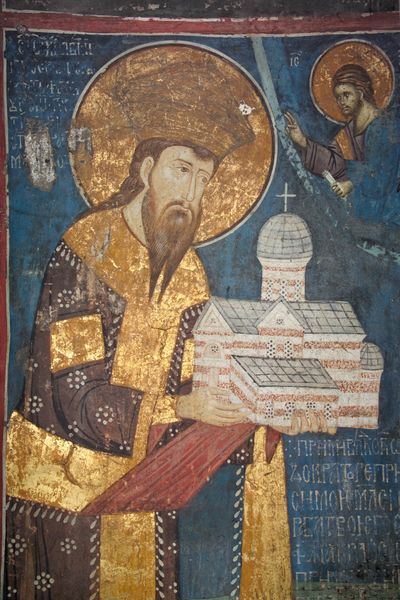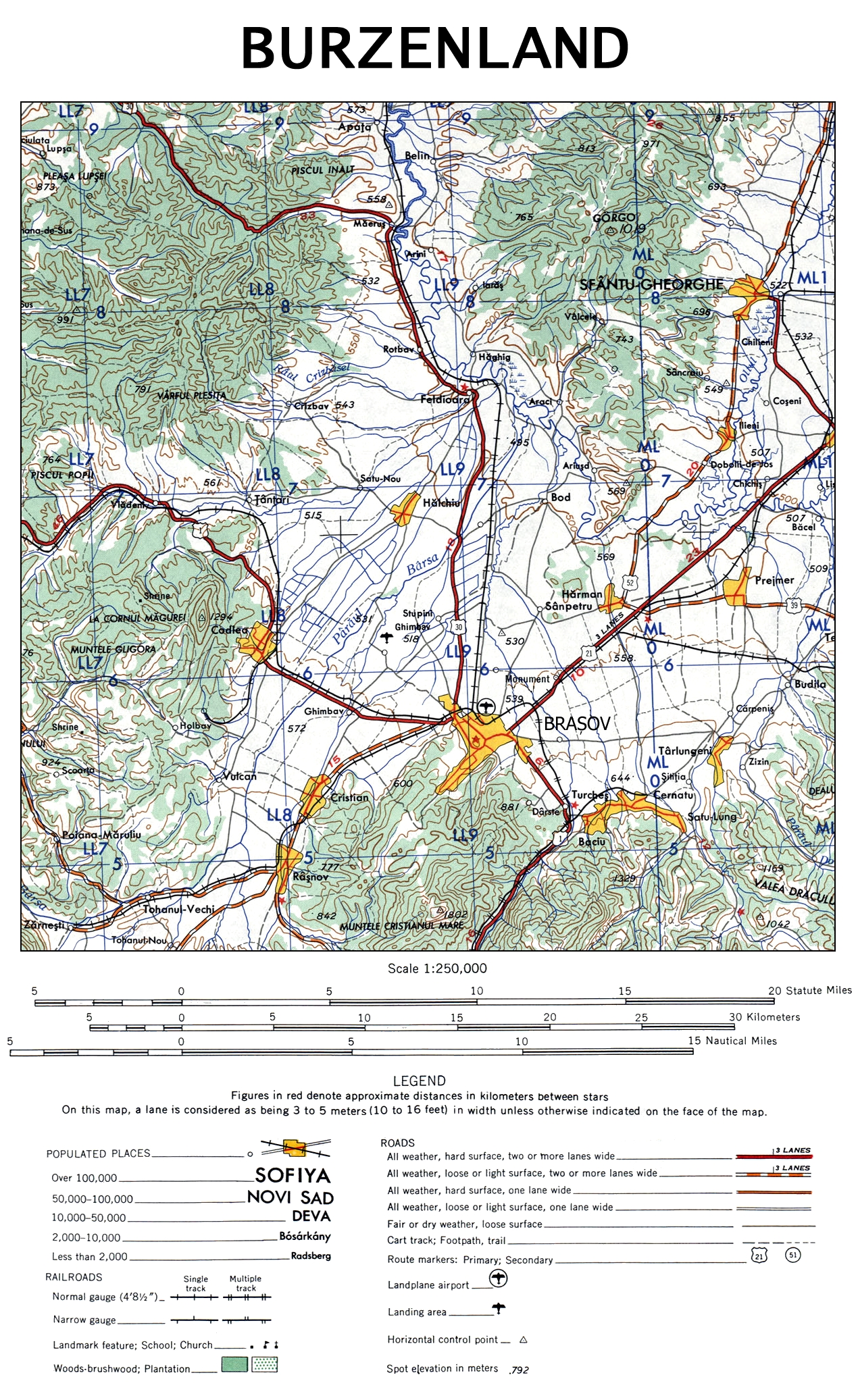|
Dârste Church
The Dârste Church is a Romanian Orthodox church located at 255 Calea București, Brașov, Romania. Located in Dârste, a former village that is now a district of Brașov, it is dedicated to the Holy Trinity The Christian doctrine of the Trinity (, from 'threefold') is the central dogma concerning the nature of God in most Christian churches, which defines one God existing in three coequal, coeternal, consubstantial divine persons: God the F .... Before the church was built, the local Orthodox community worshiped in Săcele and Brașov. In 1783, during a visit by Joseph II, the villagers handed him a petition requesting permission to establish a church. This was soon granted, and the first '' ktetor'' purchased a plot of land. Later, in 1796, Bishop Gerasim Adamović consecrated the church.Description ... [...More Info...] [...Related Items...] OR: [Wikipedia] [Google] [Baidu] |
Romanian Orthodox
The Romanian Orthodox Church (ROC; ro, Biserica Ortodoxă Română, ), or Patriarchate of Romania, is an autocephalous Eastern Orthodox church in full communion with other Eastern Orthodox Christian churches, and one of the nine patriarchates in the Eastern Orthodox Church. Since 1925, the church's Primate bears the title of Patriarch. Its jurisdiction covers the territories of Romania and Moldova, with additional dioceses for Romanians living in nearby Serbia and Hungary, as well as for diaspora communities in Central and Western Europe, North America and Oceania. It is the only autocephalous church within Eastern Orthodoxy to have a Romance language for liturgical use. The majority of Romania's population (16,367,267, or 85.9% of those for whom data were available, according to the 2011 census data), as well as some 720,000 Moldovans, belong to the Romanian Orthodox Church. Members of the Romanian Orthodox Church sometimes refer to Orthodox Christian doctrine as ''Dreapta cr ... [...More Info...] [...Related Items...] OR: [Wikipedia] [Google] [Baidu] |
Brașov
Brașov (, , ; german: Kronstadt; hu, Brassó; la, Corona; Transylvanian Saxon: ''Kruhnen'') is a city in Transylvania, Romania and the administrative centre of Brașov County. According to the latest Romanian census (2011), Brașov has a population of 253,200 making it the 7th most populous city in Romania. The metropolitan area is home to 382,896 residents. Brașov is located in the central part of the country, about north of Bucharest and from the Black Sea. It is surrounded by the Southern Carpathians and is part of the historical region of Transylvania. Historically, the city was the center of the Burzenland, once dominated by the Transylvanian Saxons, and a significant commercial hub on the trade roads between Austria (then Archduchy of Austria, within the Habsburg monarchy, and subsequently Austrian Empire) and Turkey (then Ottoman Empire). It is also where the national anthem of Romania was first sung. Names Brassovia, Brassó, Brașov, etc. According to Dragoș Mo ... [...More Info...] [...Related Items...] OR: [Wikipedia] [Google] [Baidu] |
Holy Trinity
The Christian doctrine of the Trinity (, from 'threefold') is the central dogma concerning the nature of God in most Christian churches, which defines one God existing in three coequal, coeternal, consubstantial divine persons: God the Father, God the Son (Jesus Christ) and God the Holy Spirit, three distinct persons sharing one ''homoousion'' (essence) "each is God, complete and whole." As the Fourth Lateran Council declared, it is the Father who begets, the Son who is begotten, and the Holy Spirit who proceeds. In this context, the three persons define God is, while the one essence defines God is. This expresses at once their distinction and their indissoluble unity. Thus, the entire process of creation and grace is viewed as a single shared action of the three divine persons, in which each person manifests the attributes unique to them in the Trinity, thereby proving that everything comes "from the Father," "through the Son," and "in the Holy Spirit." This doctrine ... [...More Info...] [...Related Items...] OR: [Wikipedia] [Google] [Baidu] |
Săcele
Săcele (; German: ''Siebendörfer''; Hungarian: ''Négyfalu'', between 1950 and 2001 ''Szecseleváros'') is a city in Brașov County, Romania, in the Burzenland area of southeastern Transylvania, with a population of 30,798 inhabitants in 2011. It is adjacent to the city of Brașov, its city centre being situated away from downtown Brașov. History The city since 1950 is composed of former villages which now form the main sectors: Baciu (Bácsfalu, Batschendorf), Turcheș (Türkös, Türkeschdorf), Cernatu (Csernátfalu, Zerndorf), and Satulung (Hosszúfalu, Langendorf). After the second half of the 11th century the villages are mentioned as "''septem villae valacheles''" (seven Vlach villages). The first official mention is an act issued on May 16, 1366, by the Hungarian King Ludovic I de Anjou in which he offers the area between the Timiș and Olt rivers to a trusted friend—Count Stanislav. Later it was under the Saxon management of Kronstadt (Brașov). During the Mid ... [...More Info...] [...Related Items...] OR: [Wikipedia] [Google] [Baidu] |
Joseph II, Holy Roman Emperor
Joseph II (German: Josef Benedikt Anton Michael Adam; English: ''Joseph Benedict Anthony Michael Adam''; 13 March 1741 – 20 February 1790) was Holy Roman Emperor from August 1765 and sole ruler of the Habsburg lands from November 29, 1780 until his death. He was the eldest son of Empress Maria Theresa and her husband, Emperor Francis I, and the brother of Marie Antoinette, Maria Carolina of Austria and Maria Amalia, Duchess of Parma. He was thus the first ruler in the Austrian dominions of the union of the Houses of Habsburg and Lorraine, styled Habsburg-Lorraine. Joseph was a proponent of enlightened absolutism; however, his commitment to secularizing, liberalizing and modernizing reforms resulted in significant opposition, which resulted in failure to fully implement his programs. Meanwhile, despite making some territorial gains, his reckless foreign policy badly isolated Austria. He has been ranked with Catherine the Great of Russia and Frederick the Great of Prussia ... [...More Info...] [...Related Items...] OR: [Wikipedia] [Google] [Baidu] |
Ktetor
''Ktetor'' ( el, κτήτωρ) or ''ktitor'' (; ka, ქტიტორი ''kt’it’ori''; ro, ctitor), meaning "founder", is a title given in the Middle Ages to the provider of funds for construction or reconstruction of an Eastern Orthodox church or monastery, for the addition of icons, frescos, and other works of art. It was used in the Byzantine sphere. A Catholic equivalent of the term is "donator". At the time of founding, the ktetor often issued typika, and was illustrated on fresco Fresco (plural ''frescos'' or ''frescoes'') is a technique of mural painting executed upon freshly laid ("wet") lime plaster. Water is used as the vehicle for the dry-powder pigment to merge with the plaster, and with the setting of the plaste ...es ("ktetor portrait"). The female form is ''ktetorissa'' ( el, κτητόρισσα) or ''ktitoritsa'' (). Sources * * History of Eastern Orthodoxy Philanthropy Byzantine culture Greek words and phrases {{Orthodoxy-stub ... [...More Info...] [...Related Items...] OR: [Wikipedia] [Google] [Baidu] |
Gerasim Adamović
Gerasim Adamović ( sr, Герасим Адамовић, ro, Gherasim Adamovici; 1733–1796) was Serbia-born Eastern Orthodox bishop of Transylvania (1789–1796) when it was under Austria-Hungary rule. During 1779–1783 he was archimandrite of the Sveti Đurađ monastery in Birda (Манастир Светог великомученика Георгија, also Шенђурац на Брзави). He was also archimandrite of the Serbian Bezdin Monastery (1783–1789). He was one of the signatories of the second, expanded version of ''Supplex Libellus Valachorum'', a petition for Romanians (''valachorum'') of Transylvania to be equal in political, economic and religious rights to the privileged groups: Transylvanian nobles, Transylvanian Saxons (Germans), and Székelys (Hungarians). Ioan Lupaș, ''Misiunea episcopilor Gherasim Adamovici și Ioan Bob la Curtea din Viena în anul 1792'', Sibiu, 1912 Adamović was the last Serbian Bishop of Transylvania. He had res ... [...More Info...] [...Related Items...] OR: [Wikipedia] [Google] [Baidu] |
Burzenland
Țara Bârsei, Burzenland () or Barcaság is a historic and ethnographic area in southeastern Transylvania, Romania with a mixed population of Romanians, Germans, and Hungarians. Geography The Burzenland lies within the Southern Carpathians mountains ranges, bordered approximately by Apața in the north, Bran in the southwest and Prejmer in the east. Its most important city is Brașov. Burzenland is named after the stream Bârsa (''Barca'', ''Burzen'', 1231: ''Borza''), which flows into the Olt river. The Romanian word ''bârsă'' is supposedly of Dacian origin (''see List of Romanian words of possible Dacian origin''). History Middle Ages Based on archaeological evidence, it seems German colonization of the region started in the middle of the 12th century during the reign of King Géza II of Hungary. The German colonists from this region are attested in documents as early as 1192 when ''terra Bozza'' is mentioned as being settled by Germans (''Theutonici''). In 1211 ... [...More Info...] [...Related Items...] OR: [Wikipedia] [Google] [Baidu] |
Monument Istoric
''Monument istoric'' (plural: ''Monumente istorice''), a "historic monument", is the Romanian term of designation for national heritage sites in Romania. Classifications A ''Monument istoric'' is defined as: *an architectural or sculptural work, or archaeological site. *having significant cultural heritage value, and of immovable scale. *perpetuating the memory of an event, place, or historical personality. ''Monumente istorice'' cultural properties include listed Romanian historical monuments from the National Register of Historic Monuments in Romania. They may also include places that are not specifically listed in whole, but which contain listed entities, such as memorial statues and fountains in parks and cemeteries. ;Inventory There are 29,540 designated ''monumente istorice'' (historical monuments) entries listed individually in Romania, as of 2010. Of these, 2,621 are in Bucharest; 1,630 in Iaşi County; 1,381 in Cluj County; 1,239 in Dâmboviţa County; 1,069 in Pr ... [...More Info...] [...Related Items...] OR: [Wikipedia] [Google] [Baidu] |
Ministry Of Culture And Religious Affairs (Romania)
The Ministry of Culture of Romania ( ro, Ministerul Culturii) is one of the ministries of the Government of Romania. The current position holder is Lucian Romașcanu from the Social Democratic Party (PSD). The ''Romanian National Institute of Historical Monuments'', part of this ministry, maintains the list of historical monuments in Romania. The list, created in 2004–2005, contains historical monuments entered in the National Cultural Heritage of Romania. List of Culture Ministers See also * Culture of Romania * List of historical monuments in Romania References External links MCC.ro* GUV.roRomanian National Institute of Historical MonumentsList of Historical Monumentsat Romanian Ministry of Culture and National Patrimony (in Romanian) at Romanian National Institute of Historical Monuments (in Romanian) Culture Romania Romania ( ; ro, România ) is a country located at the crossroads of Central Europe, Central, Eastern Europe, Eastern, and Southeas ... [...More Info...] [...Related Items...] OR: [Wikipedia] [Google] [Baidu] |






.jpg)